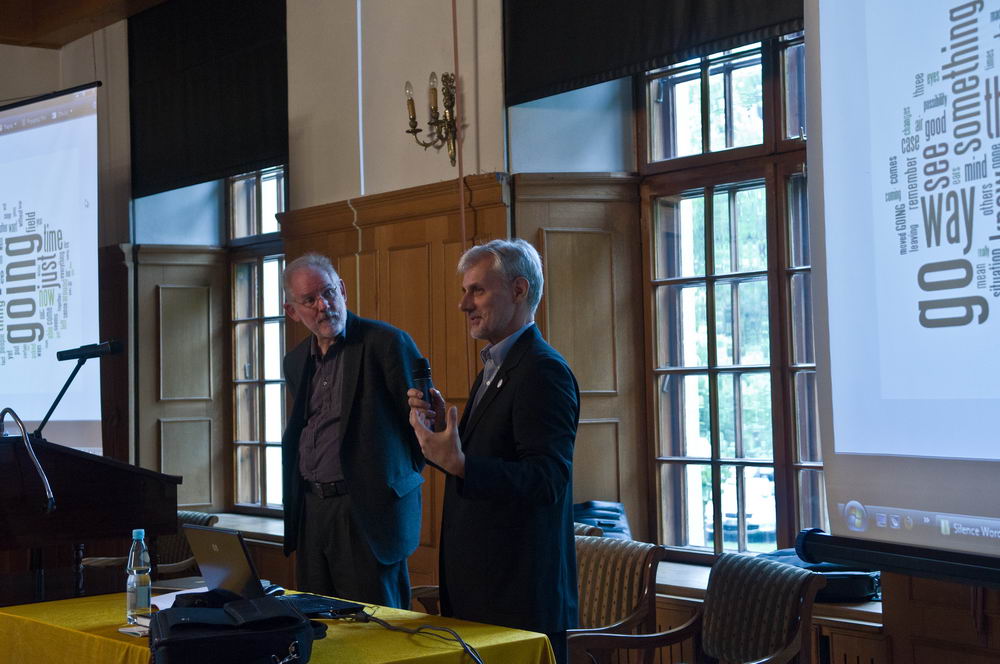(UPDATE BELOW) Some photos from last month’s Cage conference in Lublin, Poland, have arrived, taken by conference photographer Marcin Moszynski. Here’s a shot of most of the participants (minus David Revill and Margaret Leng Tan, for some reason). I will make a hash of it if I try to identify them all, but that’s Chris Shultis fifth from left, conference director Jerzy Kutnik behind two women and just under the lamp, David Nicholls between Jerzy and me, Gordon Mumma slightly crouched in front of me, and behind me Stanford political scientist Fred Turner, who had a fantastic paper relating Cage’s chance techniques to Cold War politics:
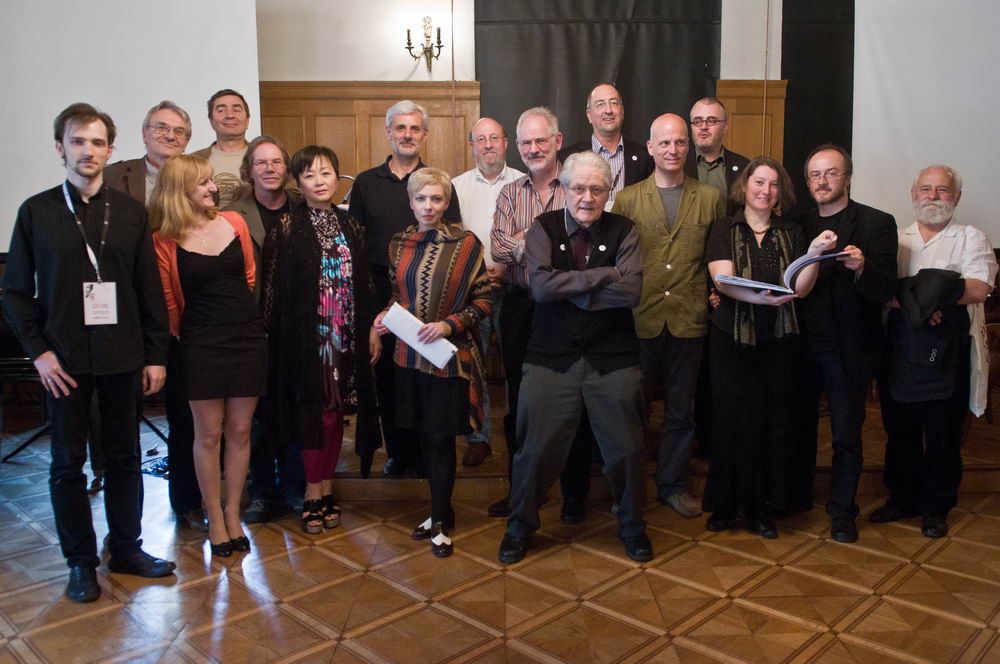
Most evenings ended up with me, Gordon and his wife Michelle Fillion, and David Nicholls ensconced in the cozy little hotel bar, drinking vodkas unavailable where I live.
For my lecture I made some word-clouds from articles in Cage’s Silence to illustrate historical changes in his concerns; you see one of them behind me in this moment which captures me in an uncharacteristic burst of enthusiasm:
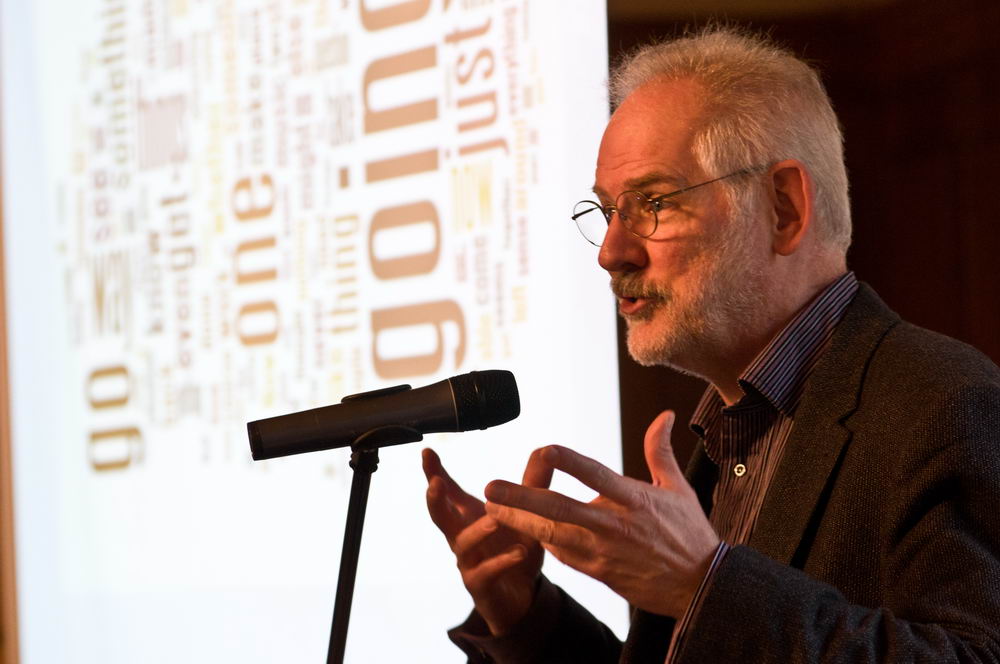
And, one of those very rare photographs in which one looks exactly as one imagines one does:
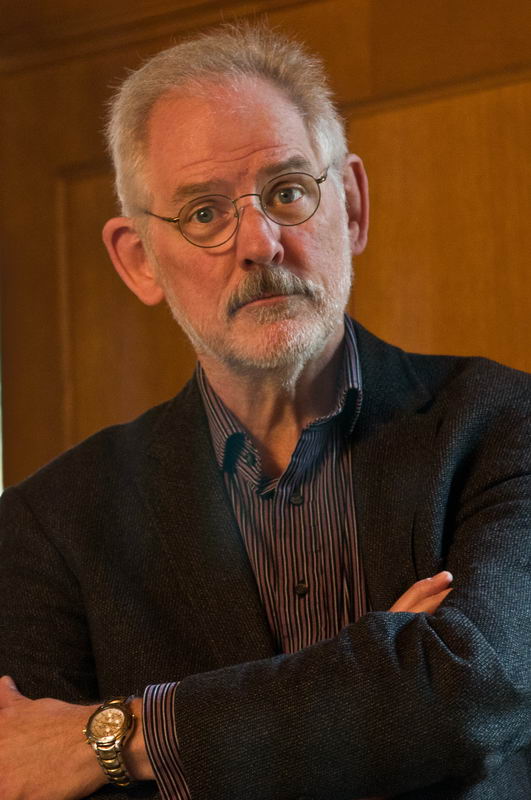
UPDATE: And here’s me and pianist Margaret Leng Tan, who both performed and lectured:
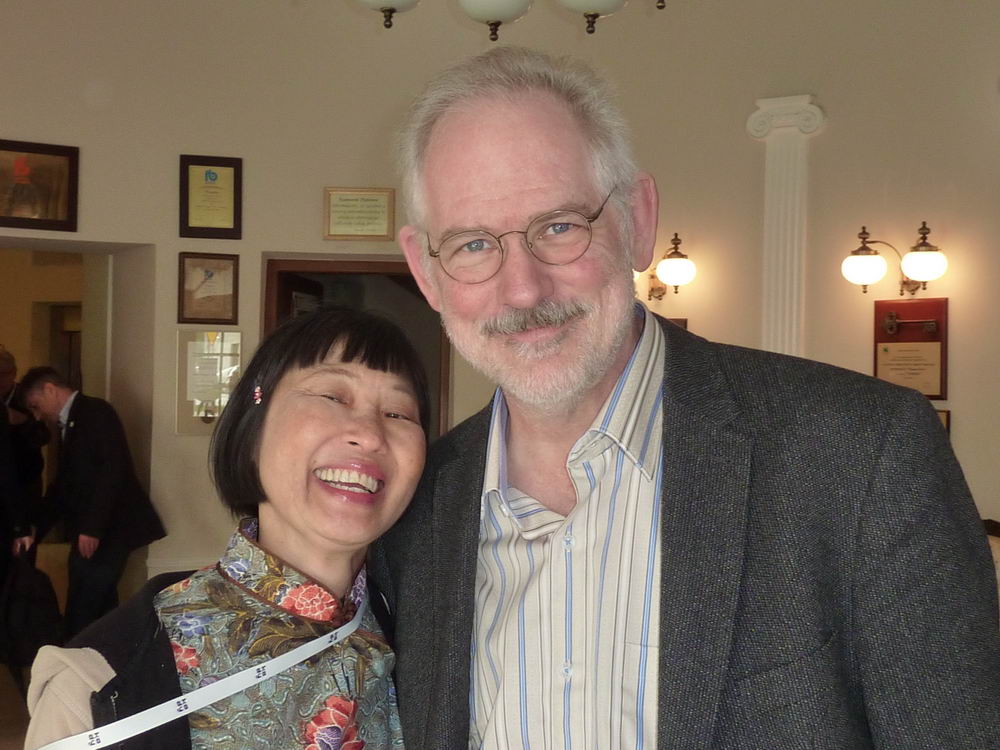
Not sure what that strap around her neck was, I assure you I wasn’t trying to strangle her.

